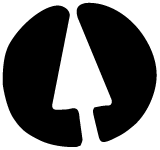CD – 7 tracks
Track listing:
1. Quarry
2. Brick and Mortar
3. Traction
4. Glowing Walls
5. Naive Prober
6. Enclosure
7. Lattice
8. Two Shelves
9. Relic
Stefan Goldmann’s ‘Call and Response’ has been crafted entirely from artificial reverb and nothing else: historic and contemporary units, responding only to brief electronic impulses (clicks).
All sounds stem exclusively from the intrinsic properties of machines designed to replicate spatial acoustics. These range from early mechanical means such as springs and plates to increasingly complex algorithms aimed at convincingly approximating the rich acoustic responses of real world environments.
The devices’ idiosyncrasies enable the creation of spaces that fall short of naturalistic expectations. Yet new possibilities of exploring physically impossible alternative realities emerge. Recorded music has a rich history of much beloved and highly unreal spatial designs – from the slap-back sounds of rock’n’roll and the echoes of dub to gated snare reverbs and the nonlinear reflection bursts of 1980’s drum machine fame. Despite the expected obsolescence of most historic efforts in the age of convolution reverb technology, many odd spatialisation techniques persist and are now the subject of contemporary emulation.
In ‘Call and Response’, the capacity of artificial reverb to go far beyond what the reflections of physical surfaces can elicit is often amplified to gargantuan proportions, only to be folded back into what appears to be the most minuscule of entrapments. Hissing tunnels and threatening wells vibrate left and right. A succession of ‘frozen’ reverbs solidifies what otherwise would be fleeting reflections. Rapid shifts create artifacts that tear the fabric of space, only to reveal the underlying mechanics of its simulation. Occasional feedback, a reverb’s output looped back into a unit’s input, produces eerie harmonic textures inherent in algorithmic response curves (analogous to resonance frequencies determined by a room’s geometric shape).
The continuously dynamic handling of parameters such as size, density and shape allows for the exploration of impossible architecture along impossible trajectories. An aural choreography, plotted along permanently receding walls, liquid ceilings and crumbling floors.

